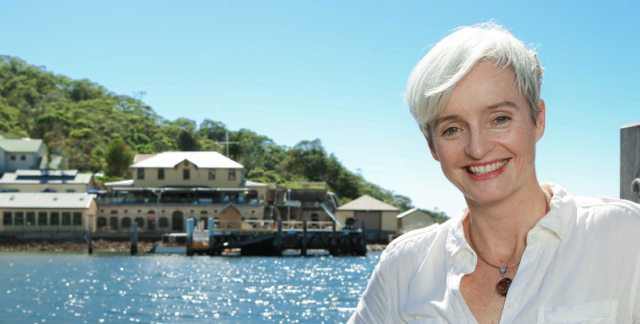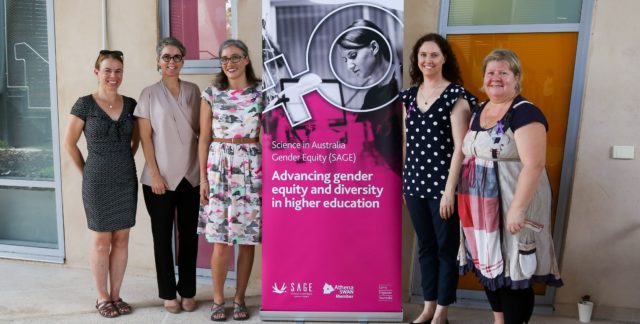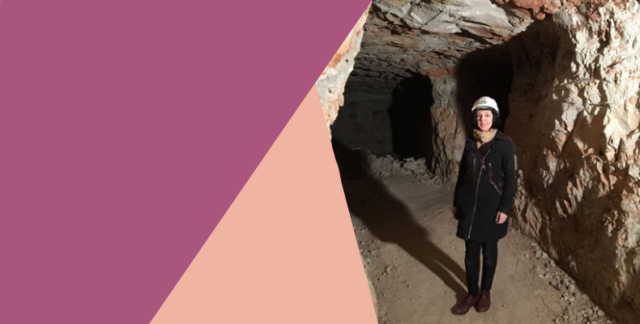Where were you born and where did you grow up?
New Delhi in India.
What got you interested in science, engineering and IT in the first place?
I wanted to be an astronaut and was fascinated with the stars – from before the time I could even spell the word astronaut! Growing up, I loved astronomy, which ultimately grew into a love for science as a whole.
I found astronomy and science fascinating… I just wanted to see what was out there in the universe and meet our neighbours and fellow creatures. At school I loved physics – working out why things were the way they were and trying to answer the “what if” type questions.
Are there any scientists in your family?
No, but there are plenty of doctors and engineers though.
What kept you interested in science and engineering?
I love that it lets me understand the universe we live in better. Every day, something in science—be it maths, physics, algorithms—hooks me deeper.
You currently work at the UTS Faculty of Engineering and IT as an Associate Professor and the Director of Women in Engineering and IT. Where else have you worked and what other jobs or roles have you had since you began your career?
I’ve only worked in academia doing research, teaching and a lot of work on diversity and inclusion. Before joining UTS, I was at City University of London in the UK where I started work as a postdoctoral research fellow and moved up to being a senior lecturer.
What do you enjoy about your current role the most? What have you enjoyed about your previous roles?
I love the research, which I already knew. The Director of Women in Engineering and IT role is also pretty special to me: I get to make policy and strategy for my faculty, that really impacts making engineering and IT a more inclusive place for women.
My unit reached over 4,000 female school students and we support our undergraduate cohort as well through a mentoring program. I get to interact with industry extensively to develop new programs that my team and I innovate, such as the primary school outreach program. I also work on understanding issues like women’s sense of belonging in engineering.
My previous roles have been largely research and teaching, both of which I enjoy. The diversity work I did there was as a volunteer and made me passionate about contributing to the STEM community being a better environment.
What research subjects are you interested in? Are they the same research subjects you were initially interested in when you started your career?
Now my research focuses on numerical modelling and simulation of optical devices, such as optical fibres, solar cells, sensors, etc so I am very interested in developing algorithms and using pure mathematics and applying it to modelling. This is a little bit different from my childhood interest in astronomy and the stars!
What brought you to Australia and when?
I came to Australia in 2018 to take up my current role at UTS in Sydney.
How would you describe your experience as a woman in science, engineering and IT, carving a career in these male-dominated fields?
It’s been tough at times. There can be a real sense of isolation being the only/one of a few women in the department. At times, being an Asian woman has added to these issues too. People can make assumptions that you are not capable (in mathematics for example) or good as a leader and you get fewer opportunities. So you have to try five times harder.
Was it difficult to move up to higher level jobs/roles? Can you share your experiences or how you worked to overcome this?
To an extent, yes. The lack of leadership opportunities offered to women, especially women of colour, is a problem. We don’t see these capable women leading STEM departments, universities, etc – not because they aren’t good enough, but because they rarely get the chance.
One way I’ve tried to counteract this is to create and seek leadership opportunities as a volunteer outside work. In those roles I developed my change management, leadership and strategic skills, and used this experience to leverage work-related opportunities.
The other thing that has helped me tremendously is mentors. These people who gave me their time and experience have helped me work through difficult situations and move forward.
You clearly care deeply about women in science, engineering and IT. What drives this passion and why is it important to your work?
I think everyone irrespective of gender (and any other characteristic) should have opportunities. We should all be able to realise our full potential. That is the only way we as a society can truly be happy. Therefore for me, contributing to that ideal society is important. To have benefits, one must contribute as well.
How are the initiatives that you’re involved with helping women in these fields?
UTS Women in Engineering and IT aims to inspire girls and women, so that gender is not a factor when choosing to pursue a career in STEM. Our initiatives target girls and women at various stages in their trajectory, from primary school through high school and university, all the way to industry professionals and professors.
Our primary and high school programs provide opportunities for girls to explore STEM through hands-on projects and activities, and build their confidence and identity as a STEM person through role-modelling.
In 2018, we reached 4,440 high school girls and had a 150% increase in scholarship applications. This year, we piloted the primary school program in five schools with over 450 Year 5 and 6 student,s and saw a positive shift in engagement in STEM in the classroom.
At the tertiary level, we connect women studying engineering and IT at university to industry professionals for one-on-one mentoring, to empower them to set and realise goals and make decisions about their careers. For our postgraduate students and staff, we provide an inclusive community and foster supportive relationships through regular events and cultural celebrations. This community is now more than 600 women strong.
Do you find that your male colleagues in science, engineering and IT understand why it’s important to have women and more diversity in these fields? How do they feel about these initiatives and programs?
Our faculty leadership is highly supportive of our team, funding a full-time program coordinator, our Director and Deputy Director and two student engagement officers, who are current students. While our community events are inclusive and we welcome all colleagues and students, male attendance is fairly low.
First year students have asked about scholarships and mentoring for men; however more needs to be done to engage men in the conversation and understand why gender equity is important for all. With national and international trends of men feeling left out of the conversation on gender equity, we are exploring what a male champions of change program, led by students, might look like.
Do you think SAGE is important for STEM in Australia and for your university? Why? And how is it helping to change practices and culture at UTS?
Creating more gender-inclusive cultures and working to address gendered inequities in employment are central to the UTS vision and strategic direction. UTS is an Athena Swan Bronze Award recipient and is building on past efforts to address barriers affecting gender equity and work towards cultural and representative parity.
Adopting the Athena Swan Charter and participating in the SAGE pilot is a key part of creating a plan to move this work forward. The Athena Swan Charter also celebrates current efforts by Women in Engineering and IT that promote gender equity.
Do you see STEM playing an important role in Australia’s future? Is Australia investing enough in diversifying our STEM workforce to keep up with the rest of the world?
The importance of STEM to innovation and the Australian economy is well-documented. The Women in STEM Decadal Plan 2019 provided a national agenda for diversifying STEM, and significant investment is being put into evaluating the impact of existing programs under the Office of the Women in STEM Ambassador, but I think Australia could always do with more investment.
From our side, we are working to collaborate on initiatives with other universities so that we can collectively attract funding for initiatives and achieve more by working together and sharing best practice.
You’re also organising a Women in Engineering Symposium in Sydney in October this year. What do you hope to achieve with this and what’s on offer for people attending?
The event will bring together universities across Australia who are making efforts to increase the participation of women in STEM degrees, particularly engineering. The purpose of this event is to address the diversity problem as a collective (rather than in silos) through concrete actions and collaborative initiatives.
We will also be including other stakeholders who influence STEM and gender: teachers, industry, professional bodies, government and policy-makers, not-for-profit groups and so on, each of whom plays a role.
The inaugural Women in Engineering Symposium was organised by the University of Queensland in 2016, followed by another two-day symposium in Melbourne in 2018.
In 2019, the symposium will be held on 3–4 October and will be jointly hosted by the UNSW and UTS.
Learn more about the Women in Engineering Symposium 2019.
Anything else you would like to add?
It is really heartening to see so much effort being made in Australia towards gender equity in STEM and the great collaborative attitude among people across the sector!



